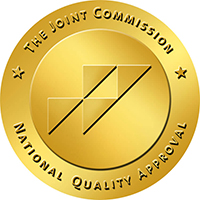While it is obvious that your emotions can influence your movements, it is less obvious that your movements can influence your emotions. Exercising, also known as a natural mood enhancer, is one of the most beneficial activities for both your mind and body. It not only makes you feel good after a workout, but it also helps you deal with stress, depression, and other negative emotions.
What are the mental health benefits of physical activity?
The production of feel-good brain chemicals like endorphins is the most obvious effect of physical exercise on our mental health. Endorphins ease pain and tension in the mind while also providing a general sense of pleasure during physical activity and other tasks. You've probably heard of "the runner's high," which describes when your body releases endorphins as a result of running.
Endorphins are one of the numerous neurotransmitters in our brain that influence our thoughts and feelings in various conditions. When they are turned on during exercise, they produce a variety of beneficial chemicals that not only help us get through the action at hand, but also boost our overall mood.
Mental disorders are estimated to account for 13% of the overall worldwide disease burden. People who are diagnosed with mental illness face severe suffering and incapacity, and the financial and personal costs of mental illness, such as lost productivity and work participation, are substantial. A recent study discovered a strong link between physical exercise participation and mental health in patients with mental illnesses.
Physical activity has also been shown to improve cognition in one recent study. Physical exercise programs, such as walking and strength training, have been shown to improve cognition in both healthy and cognitively impaired groups. While the specific mechanisms for such effects are unknown, a reduction in vascular risk factors, improved cerebral blood flow, and a rise in neural development factors might all play a part.
What role does physical activity play in the treatment of mood disorders?
Major depressive disorder (MDD) affects approximately 16.6 percent of adults in the United States at some point in their lives, whereas bipolar disorder affects 2.1 percent of people in the United States. Medical and psychological comorbid problems, as well as functional impairment, are common in both MDD and bipolar disorder. Because of reduced physical activity and more sedentary behavior, as well as pharmaceutical side effects, people with MDD and bipolar disorder have an increased risk of cardiovascular disease, diabetes, and metabolic syndromes.
According to this study, the efficacy of exercise as a mood disorder intervention has resulted in effect sizes equivalent to pharmaceuticals. Exercise may be particularly useful as an additional therapy option for people with MDD, treatment-resistant depression, and bipolar disorder, given the high rates of partial and non-response to pharmaceutical treatment and the need to enhance mental and physical health outcomes. Initial research also shows that incorporating exercise augmentation strategies into cognitive-behavioral therapy for anxiety disorders or standard treatment for depression can improve outcomes.
How much physical activity is needed to enhance mental health?
30 minutes of exercise 3-5 days a week can considerably alleviate depression and anxiety symptoms, but even 10-15 minutes of physical activity at a time can help! Strength training and lifting weights, jogging, cycling, or joining an aerobic fitness class are all examples of more intensive activities that can enhance your mood in less time.
If all of this sounds intimidating, remember that any activity is a start in the right direction for your mind and body. Even if it starts off as simple as a 15-minute stroll around your neighborhood, these modest efforts may have a big impact on your entire attitude. Begin slowly and gradually improve your relationship with fitness and mental wellness. To get started, pick an activity that you love or have done in the past, and develop a short, easy-to-follow workout schedule that makes you more active every day without exhausting your motivation right away. Finding a long-term workout plan that you can stick to will bring the biggest mental health advantages.
Start getting fit today
Solstice Pacific can assist you or a loved one suffering from mood problems. To guarantee effective therapy, we combine traditional therapeutic procedures (such as CBT, counseling, coping skills, and so on) with physical exercise. Please do not hesitate to contact us via our website or by calling (949) 200-7929. To help us get to know you better, you may also take this short assessment and verify your insurance.
The mind and body are inextricably linked. While your brain is in charge of your body's movement, the way you move could have an impact on how you think and feel.







